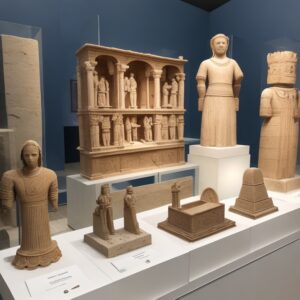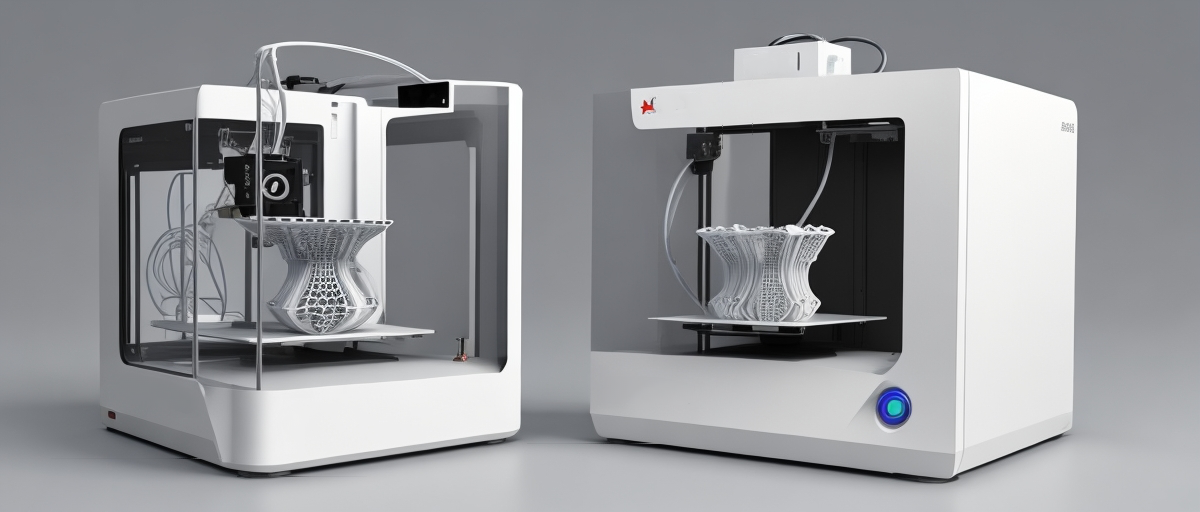In museology and archaeology, where the past is unearthed and stories preserved for future generations, the advent of 3D replication technology marks a revolutionary step. This incredible innovation breathes new life into the way we study, engage with, and understand historical artifacts and sites.
High-Fidelity Reproductions
High-fidelity reproductions made possible through 3D printing are revolutionizing the experience of historical and cultural artifacts. This innovative approach to replication enables museums, educational institutions, and archaeologists to create tactile encounters with priceless treasures. Using meticulous 3D scanning techniques, every aspect of an original artifact’s texture and shape is captured with great precision. These exact details, including the minute wear and tear marks, the subtle textures of decay, and the inscriptions worn by time, are then recreated in the replica with astonishing accuracy. As these replicas are often made from durable materials, they can withstand handling by researchers and the public, which allows for a form of interaction that was previously unimaginable.
High-quality replicas deepen our connection to past civilizations and the people who shaped them. They serve as powerful educational tools, bringing to life the weight of a sword, the intricacy of a carving, or the refinement of an ancient jewelry piece. They import in democratizing access to heritage, as replicas can travel without the risk of damaging the precious originals, enabling people around the world to engage with cultural marvels up close.
The use of 3D replicas aids in the conservation efforts of historical artifacts. While the originals may require strict environmental controls and limited exposure to light to prevent further degradation, the 3D printed copies can be displayed more freely and used for interactive exhibits without the same concerns for preservation. In the tragic event of an original artifact’s destruction, the 3D renderings and replicas stand as a testament and a backup to the lost cultural heritage, preserving its form for future generations. The confluence of technology and tradition embodied in high-fidelity reproductions offers a promising landscape for museology and archaeology, allowing them to safeguard history’s treasures while providing an immersive, educational, and inspiring experience.
Conservation and Protection Through Copies

The strategic use of 3D replicas in the conservation and protection of cultural artifacts is an innovative measure redefining the stewardship of historical treasures. These replicas provide a practical solution for the preservation dilemma—balancing the need for public engagement and education with the imperative to conserve artifacts for future generations. By creating exact, tactile copies, 3D technology allows for the original items to be removed from high-traffic display areas and placed into controlled environments that enhance their longevity. This helps counteract risks such as light exposure, fluctuations in temperature and humidity, and the wear that comes from direct contact with visitors or even researchers.
Replicas offer a fallback option in case of unforeseen incidents, such as natural disasters, theft, or accidental damage. They function as an insurance policy for the cultural heritage sector, ensuring that the essence and knowledge of a piece remain intact, even if the original is compromised. During restorative efforts, where handling the original artifacts is necessary, replicas can serve as valuable reference models to guide the complex processes of repair and reconstruction.
Institutions across the globe have begun to deploy replicas for hands-on educational activities, allowing a much more dynamic interaction with history. Through replicas, educators can illustrate historical contexts, manufacturing techniques, and conservation challenges without subjecting the genuine articles to potential damage. With 3D scanning and printing becoming more accessible, there is a growing trend in open-source sharing of 3D models, which facilitates global access to digital copies of artifacts and fosters a collaborative approach to historical preservation.
This approach to conservation and protection through the use of copies is increasingly important in a global environment where cultural artifacts can be threatened by conflict or economic instability. It ensures that the rich tapestry of human cultural history remains intact and available for academic study, public appreciation, and the enrichment of collective knowledge well into the future. The integration of 3D replica production into conservation strategies safeguards the physical integrity of artifacts and contributes to the continuity of cultural narratives and the educational legacy they represent.
3D replicas democratize access to cultural heritage by breaking down geographical and physical barriers. These copies can be exhibited across multiple venues simultaneously or incorporated into traveling exhibits, reaching audiences who might never have had the chance to witness the original artifact. 3D prints can be handled by the public and are instrumental in education, providing hands-on learning opportunities that were once deemed unfeasible.
Virtual Reality
By bringing 3D models into a fully immersive, interactive three-dimensional space, VR opens up new avenues for exploration and education. When integrating VR with the field of archaeology and museology, it becomes a powerful storytelling medium, recreating and simulating historical environments with unparalleled vividness.
Users are active participants in the historical narrative. By slipping on a VR headset, one can engage with the past in a manner that is impossible in the real world. You could, for example, walk through a meticulously reconstructed virtual Pompeii, observing the details of everyday life before the eruption of Mount Vesuvius, or stand within the prehistoric caves of Lascaux, France, to examine ancient paintings without concerns for conservation or geographic accessibility.
VR enables collective experiences such as virtual guided tours, where multiple users can interact with each other and with digital docents within the reconstructed environments. This technology is also an invaluable tool for researchers and archaeologists. It allows them to test hypotheses about the use of space and structure within ancient sites or to visualize the placement and significance of artifacts within their original context—something that is often lost when items are removed and displayed in museum settings.
For sites that have been damaged or destroyed by time, neglect, conflict, or natural disasters, VR offers the means to preserve and resurrect them in the digital sphere. The destruction of irreplaceable historical sites, like those in Palmyra, Syria, has made it perilously clear how important these digital preservation efforts can be. Through virtual reality, we preserve the memory and essence of these sites and continue to appreciate and learn from them in a fully dimensional and sensory way.
Virtual reality in archaeology and museology is instrumental in democratizing access to culture. Distance and economic barriers often prevent people from visiting distant or expensive historical sites and museums. VR technologies allow anyone with access to the equipment to embark on a cultural journey that transcends both time and space. In embracing the possibilities of VR, the fields of archaeology and museology ensure that cultural heritage is living, evolving, and accessible experience that continues to inspire and educate across the barriers of the physical world.
Future Directions of 3D Replication
High costs, technical complexities, and the need for specialized equipment and expertise are substantial barriers to widespread adoption. Debates on the differentiation between replicas and originals stir concerns about authenticity and value. Museology and archaeology professionals continue to navigate these issues, striving for balance between innovation and tradition.
3D replicas will undoubtedly continue to revolutionize museology and archaeology. The combination of preservation, accessibility, and educational outreach has laid a solid foundation for ongoing research and public engagement. As scanning and printing technologies advance, the line between the past and the future grows ever fainter, allowing us to interact with history in ways that were once confined to the realm of imagination.
The use of 3D replicas in museology and archaeology is about redefining our connection with history. They promise a more inclusive, interactive, and immersive approach to cultural preservation and education.

